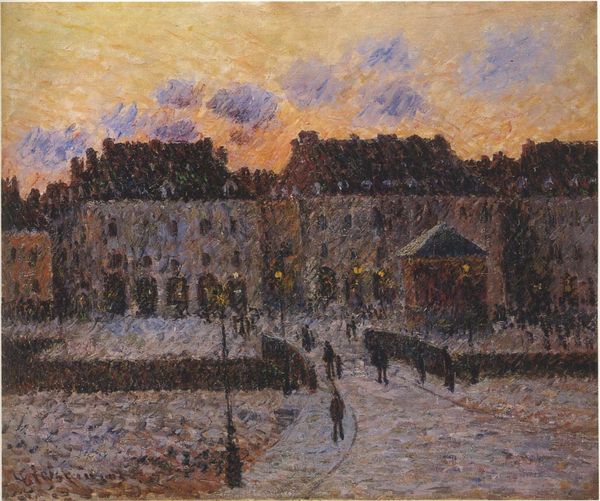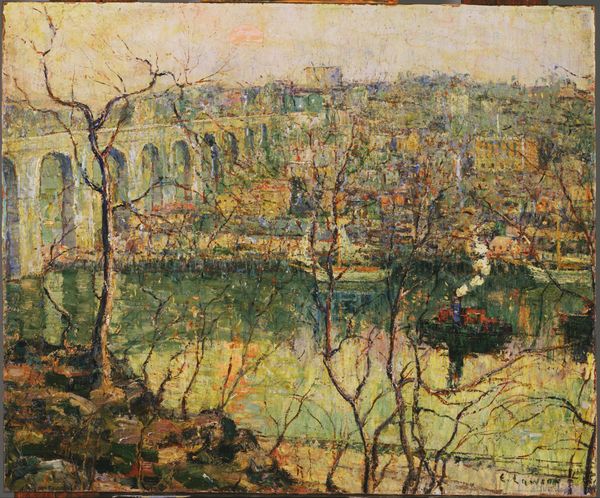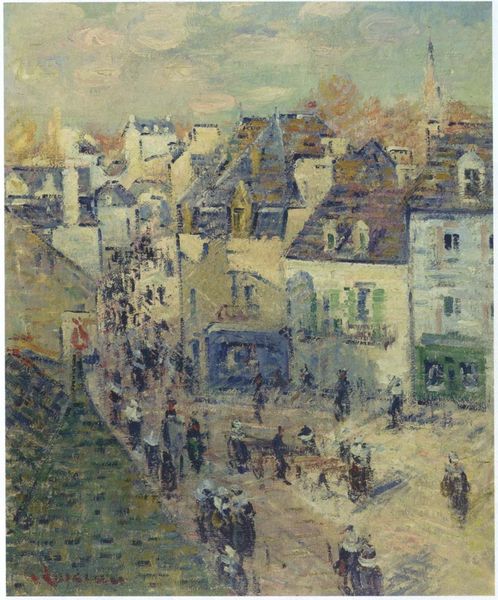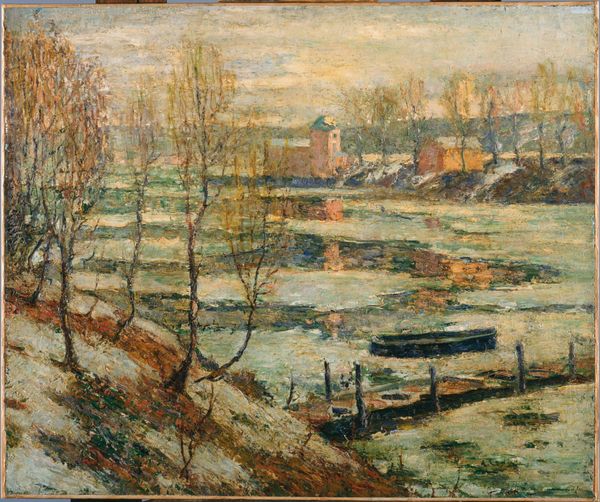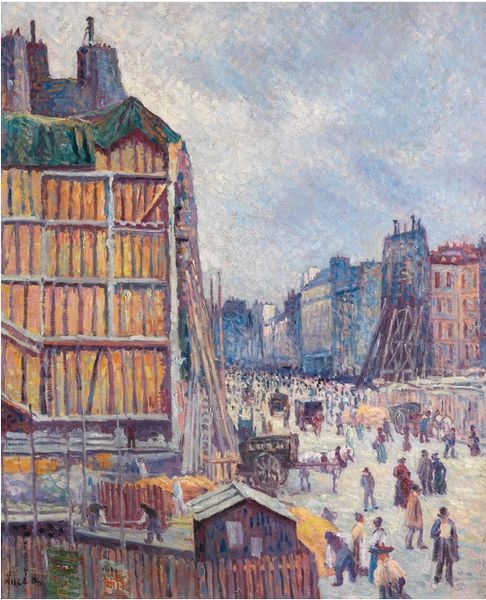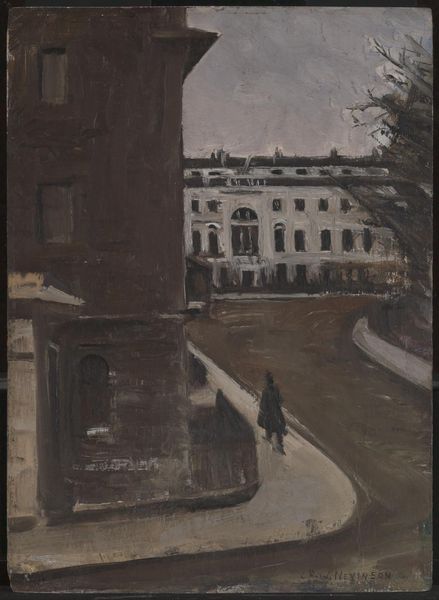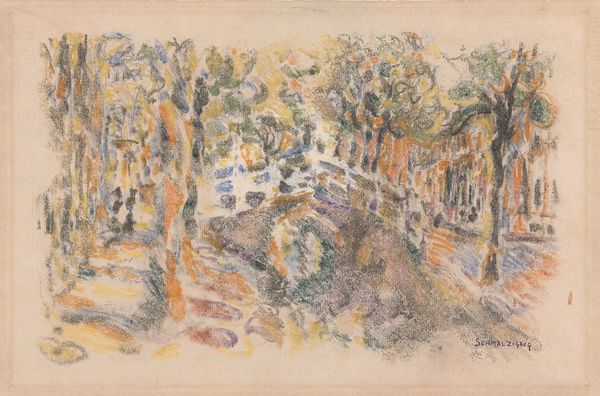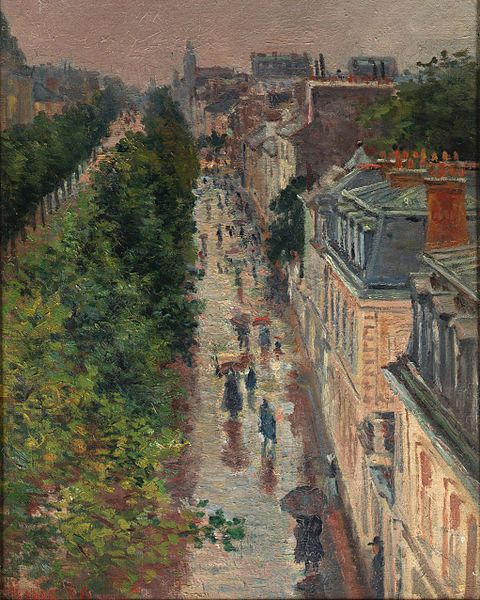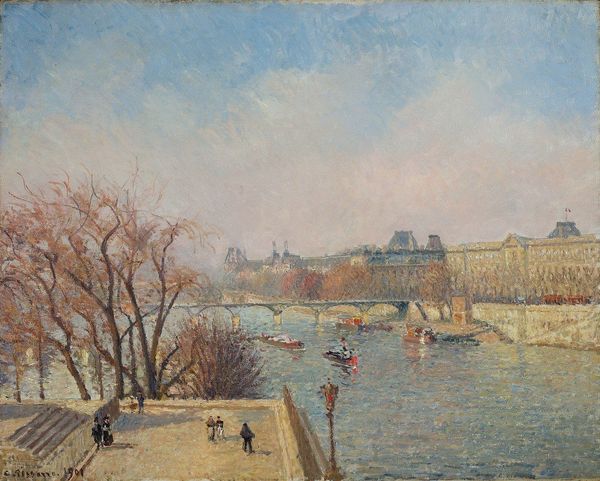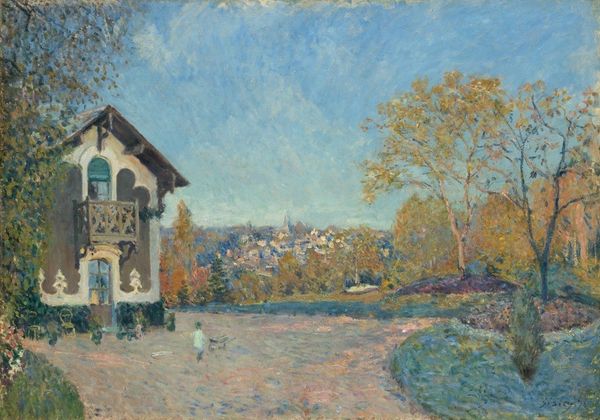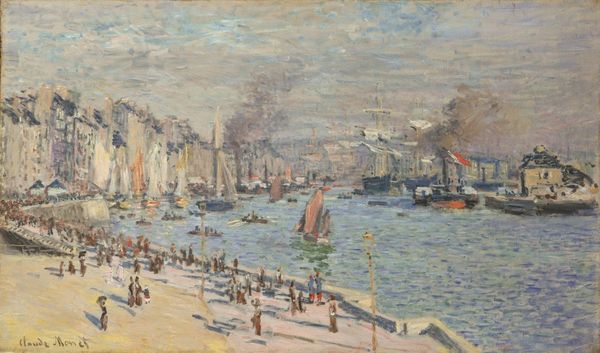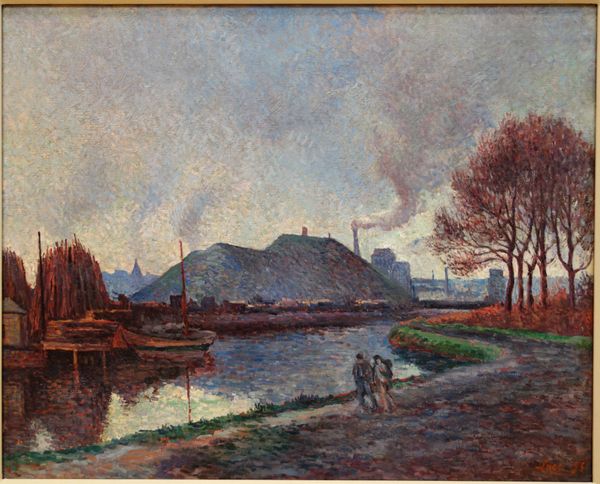
Copyright: Public domain
Curator: This is "Spring on West 78th Street," an oil on canvas painted in 1905 by Childe Hassam. It’s a quintessential example of American Impressionism. Editor: Oh, the light! It just shimmers. Makes you want to stroll right into that street, umbrella or parasol in hand, of course. Though it feels a bit melancholy, maybe because of the muted tones despite the "spring" title. Curator: It's fascinating to consider Hassam’s approach to the cityscape as a subject. Here, the labor of constructing and maintaining the city—the paving of the streets, the management of traffic by horse and carriage—blends with the ephemeral qualities of light and weather. Note the impasto application. It is not a pristine boulevarde but rather shows the evidence of urban existence. Editor: Exactly! I love that you pointed out the visible work. You can almost hear the clip-clop of the horses and feel the slight dampness of the road. It reminds me of rainy days in NYC. Hassam really captures the essence of fleeting moments. And for me, there's a bit of hope peeking through those budding trees and pastel hues on the horizon line. Curator: I find compelling how he contrasts organic spring foliage with the rigidly constructed brownstones. He also focuses on the social stratification implied by the horse drawn carriages. Were there streetcars running there at that time, or perhaps just for the elite? Editor: Mmm, carriages versus maybe the new-fangled streetcars! The social fabric all woven into the painting. But it still has an underlying intimacy that persists with a modern audience, a warmth… like a slightly faded memory. Curator: I agree, its enduring appeal lies, perhaps, in its capturing a fleeting moment within a rapidly changing urban environment. Hassam used commercial, ready-made paints from industrial producers of the era. Editor: I always wonder what the subjects of the work really thought and how that has changed over the decades since they were originally captured on the canvas. It truly becomes like a historical portal when thinking about the intersection of subject, time, and production as you suggest.
Comments
No comments
Be the first to comment and join the conversation on the ultimate creative platform.
